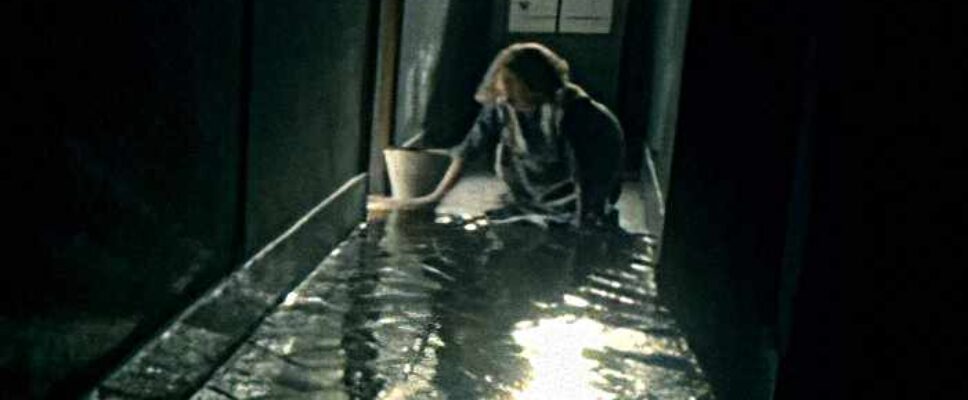Teresa Reviews “Mrs. McGinty’s Dead” (2006)
Teresa reviews “Mrs. McGinty’s Dead” (2006) and thinks it’s a worthwhile look at an isolated Poirot in a sad English village.
Fidelity to text: 4 sugar hammers
![]() The usual compression to force a novel into a movie. The bigger change was amping up the character’s miserable personal lives.
The usual compression to force a novel into a movie. The bigger change was amping up the character’s miserable personal lives.
Quality of movie on its own: 4 sugar hammers
![]()
![]()
![]()
Read more of Teresa’s Agatha Christie movie reviews at Peschel Press.
Also, follow Teresa’s discussion of these movies on her podcast.

They are that different.
This adaptation follows the novel closely. You won’t notice the missing characters. What you will notice is how unpleasant everyone remaining is, including characters who didn’t have contentious private lives in the novel. In particular, it bothered me that Major Johnnie and Maureen Summerhayes turned into English country village versions of George and Martha from Who’s Afraid of Virginia Woolf? They’re both heavy drinkers, they fight where other people can hear them, and they lost the children the novel gave them.
They’re also almost destitute, forced to take in paying guests (PG’s in the episode) to make ends meet. No wonder they fight. Still, Poirot’s scenes in their once-grand mansion, Long Meadows, are always amusing. The food’s terrible, the house is a demolition zone, Maureen is chronically disorganized, Johnnie’s trying to write a memoir that will never sell when he’s not failing at market gardening, every window leaks (since it’s autumn, that means icy drafts), and the Summerhayes dogs are openly hostile to Poirot.


Unfortunately, other than Maude Williams (who we can tell is in love with the boy), the residents of Broadhinny don’t understand why Poirot’s nosing about when Bentley is so obviously guilty. What they’re really afraid of is their own guilty secrets will be revealed. Since it’s obvious Bentley coshed Mrs. McGinty, a private detective in Broadhinny must be investigating someone else. After all, who cares that some char got killed?
Dr. and Mrs. Rendell needed more screen time. Why did he shoot her up with a hypodermic needle? Why did she push Poirot into an oncoming train? Why were they both concerned about their past and afraid of nasty, anonymous letters? Poirot pulls the answer from his boutonnière vase.
Eva and Guy Carpenter needed more screen time too, starting with why an aspiring politician married a stripper and why, if she was worried about her past being revealed, she kept her old programs touting her assets lying around.


Mrs. Upward prefers to keep her protégés on a short leash. She also prefers a mother/son relationship to the distasteful cougar / boy-toy scenario. It’s so much classier to have a son who’s a successful playwright than an unemployed actor whose sole purpose (as far as the neighbors can tell) is bed-warming.
This plot point didn’t get a coherent explanation. In the novel, Ariadne discovers Robin’s true relationship with Mrs. Upward by accident. Poirot calls it a polichinelle secret. The term comes from a 1903 French farce of the same name. It means that if everyone in a group knows the secret, it’s not considered a secret but at the same time, the group doesn’t discuss the secret because everyone already knows the facts. To an outsider, however, the secret remains a secret not because it’s hidden but because no one talks about it.
What is Robin Upward’s polichinelle secret that everyone in the repertory theater company knows but no one else does? That he’s not Mrs. Upward’s natural son. This is another tidbit that Poirot pulls out of his boutonnière vase. It would have been better to have seen Ariadne learn the secret and tell Poirot.
Ariadne was great fun. She shows up in her dashing motor car, tosses an apple core, and scores a direct hit on Poirot. Accidental, of course. What is she doing in Broadhinny? She’s working with Robin, trying to turn a Sven Hjerson story into a successful play. Ariadne reflects Agatha’s own theatrical experiences and frustrations. Ariadne wrestles with Robin over Sven’s age, nationality, physical fitness, sexual attractiveness, and eating habits, all of which Robin wants to change despite her protests.


between him and your young girl?”


Solving Mrs. McGinty’s murder comes as a welcome relief, saving Ariadne from having to rewrite Sven into something he’s not. Her travails felt realistic. Think of what she’d say if a Sven Hjerson novel got turned into a movie with a completely different detective as the star (i.e., Margaret Rutherford).
The sugar hammer features prominently, of course. It was nice to see a real one and, even better, the one Poirot found in Maureen Summerhayes’ messy parlor matched the description in the text. If you’re unfamiliar with antique kitchen utensils, sugar used to come in big, hard loafs. Think of a solid, five-pound block of rock-hard sugar. To get usable sugar, the cook would use a sugar hammer. Sugar hammers have a hammer on one side of the head, an axe-blade on the other, and a long haft. You’d break off a chunk of sugar with the blade, then pound the chunk into granules. It’s a terrific murder weapon.


Equally concealed was the tepid relationship between Maude Williams and Bentley. I couldn’t see why she liked him, other than the plot told her too. As it turns out, she had a very good reason for showing up in Broadhinny and a good reason for believing that Bentley didn’t do it. But she needed more time too.
Despite these points, Mrs. McGinty’s Dead is still a worthwhile movie. It could have been better. It should have been better. But it’s the best we’ll get and, unlike Murder Most Foul, it follows the novel.

